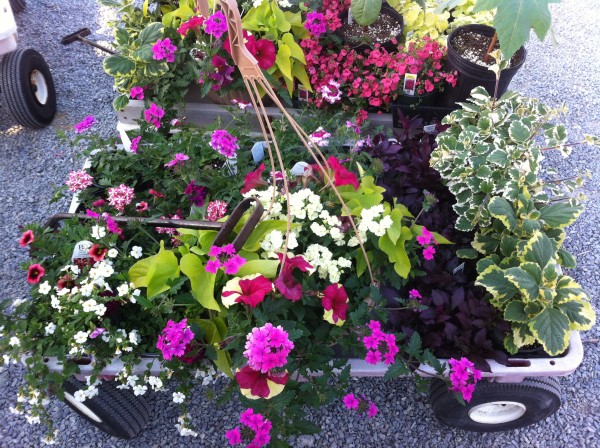 Last week we got a new puppy for our daughter, Ali. Bear is a little black and white Pomeranian ball of fluff and personality. Our nine and ten-year-old dogs were young long enough ago, I forgot how much work puppies are. Then came the news schools were closed for COVID-19 and I got relieved of puppy-tending duty as my 8th and 6th graders are now home for the foreseeable future.
Last week we got a new puppy for our daughter, Ali. Bear is a little black and white Pomeranian ball of fluff and personality. Our nine and ten-year-old dogs were young long enough ago, I forgot how much work puppies are. Then came the news schools were closed for COVID-19 and I got relieved of puppy-tending duty as my 8th and 6th graders are now home for the foreseeable future.
Bear loves to spend time with us both playing outside and as we work in the greenhouse. He is so much fun to play with, but it’s not an easy job to keep him safe. He loves to chase dry leaves in the yard and un-transplant the seedlings in the greenhouse. They are exactly at his mouth height. Several petunias have already come out the loser.
I figured it was time to review what plants are harmful to pets.
Spring bulbs are emerging now and some like daffodils, crocus and tulips are harmful to animals if ingested. They can cause gastrointestinal problems, excess salivation, tremors and potential cardiac problems. Other summer bulbs like gladiolas, lilies, caladiums and the house plant amaryllis bulbs should also be kept out of pets’ reach.
Several perennials are infamous for their toxic properties. Aconitum, or monks hood, is neuro-and heart toxin. It was used by the villain in more than one mystery novel I’ve read. Foxglove or digitalis, a heart toxin, is poisonous to people and pets. Digoxin was isolated from foxgloves to treat some cardiac problems in humans, but don’t self-medicate from your yard! Chrysanthemums make their own insecticides, pyrethrins, which induce vomiting and diarrhea in your furry friend.
Most herbs like parsley chamomile, rosemary and sage are quite safe and actually aid in pup’s digestive health. Keep Fido out of the vegetable garden though. Tomatoes, in the Solanaceae family, contain the chemical solanine. It is a substance found in the green leaves, stems and green fruit. It can cause gastrointestinal upset, cardiac problems and loss of balance. Some pets like to eat ripe tomatoes as a snack. That is ok, as there is no solanine in ripe fruit.
Houseplants are really popular right now, but there are some that can cause harm to pets. Be aware of aloe, while healthy to rub on burns, contains saponin. This chemical causes lethargy, vomiting, diarrhea and nerve problems. Other houseplants like palms and jade should be kept away from pets. The safest houseplants for cats and dogs are spider plants, polka dot plant, African violets and Boston fern.
Of the woody plants, rhododendrons and azaleas are most poisonous to pets. They contain grayanotoxins that disrupt cell metabolism specifically nerve and muscle cells. This leads to severe cardiac problems. Evergreen boxwood and yews are both harmful if eaten. Hydrangeas and hibiscus also contain chemicals that upset the stomach if eaten.
While it is hard to keep a curious puppy from chewing everything in sight, very few plants are truly harmful. If you suspect your pet has eaten something from your yard, try to identify it, and call your vet or the ASPCA Animal Poison Control Center at (888) 426-4435 immediately. Sometimes they will suggest you induce vomiting, or offer more targeted treatment if available.
For a complete list of harmful and helpful plants check out the ASPCA website at: https://www.aspca.org/pet-care/animal-poison-control/toxic-and-non-toxic-plants

 Last week we got a new puppy for our daughter, Ali. Bear is a little black and white Pomeranian ball of fluff and personality. Our nine and ten-year-old dogs were young long enough ago, I forgot how much work puppies are. Then came the news schools were closed for COVID-19 and I got relieved of puppy-tending duty as my 8th and 6th graders are now home for the foreseeable future.
Last week we got a new puppy for our daughter, Ali. Bear is a little black and white Pomeranian ball of fluff and personality. Our nine and ten-year-old dogs were young long enough ago, I forgot how much work puppies are. Then came the news schools were closed for COVID-19 and I got relieved of puppy-tending duty as my 8th and 6th graders are now home for the foreseeable future.